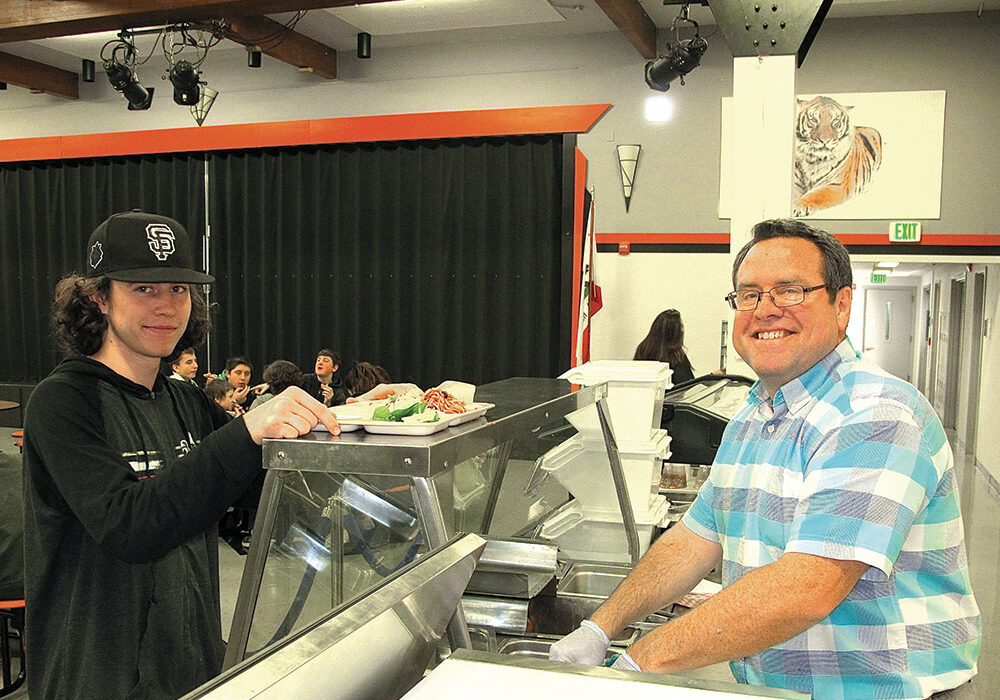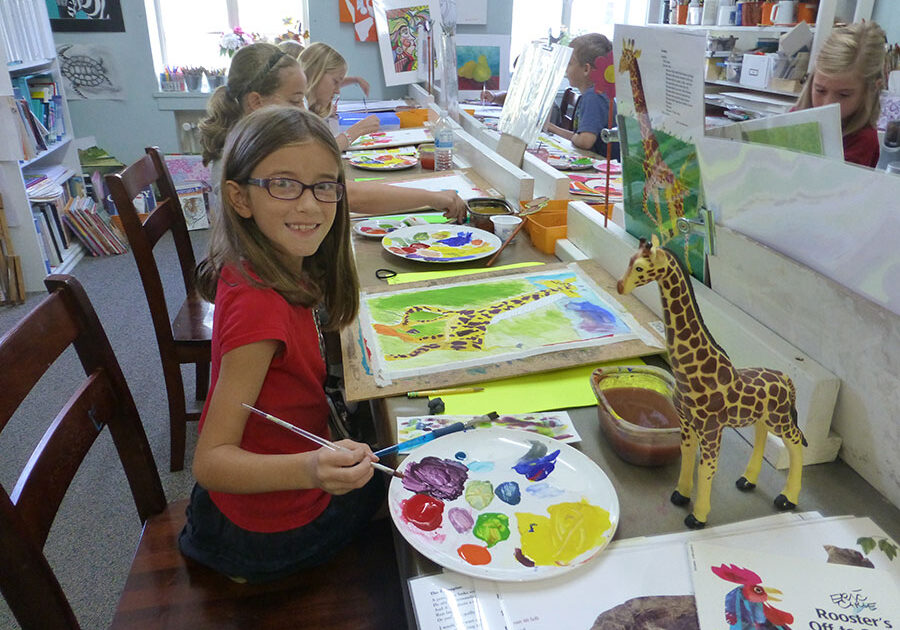 Kathy Olson, a mom and internist, recalls the day she brought in a special cake for the lunch table her son Isaak shared with the other “allergy boys” in his pre-kindergarten class. “They loved it. Everybody else had popsicles that day, but they got to have cake,” Olson says.
Kathy Olson, a mom and internist, recalls the day she brought in a special cake for the lunch table her son Isaak shared with the other “allergy boys” in his pre-kindergarten class. “They loved it. Everybody else had popsicles that day, but they got to have cake,” Olson says.
This special allergen-free lunch table has been a mixed blessing for Isaak, whose allergies to eggs and milk can cause nausea and vomiting for up to four hours.“He does feel a little bit separated,” Olson says. “Sometimes it makes him sad, other times he just rolls with it. I’ve tried to teach him it’s just part of life.”
Dr. Robert A. Wood, professor of pediatrics at Johns Hopkins University School of Medicine and author of Food Allergies for Dummies, recommends allergen-free tables at schools for children younger than nine years old. “By the time a child is nine or ten, I believe these tables no longer provide much benefit,” he writes.
While parents may worry that a child will feel isolated, psychologist Ben Low says he has rarely heard of that becoming a problem. He suggests parents explain simply that some foods can make the child really sick. “You need to sit at this table to keep you safe,” his script goes, “at recess you can do what you want.” Low urges parents to emphasize the positive and keep it concrete.
Many schools work to limit the sense of isolation a child with an allergy might feel. Sometimes the child can sit at the end of a table with a “buffer” of children with safe lunches on either side. At Seattle Country Day School, the allergen-free table sits in the middle of the room and is in high demand. Any child with a safe lunch can sit there. “It’s the best table,” says K-3 Division Head Jackie Bradley, “they actually fight over who gets to sit at that table.”
What is clear is that the need for allergen-free tables in school lunchrooms is growing. A recent study published in the July 2011 issue of Pediatrics magazine found that an estimated 5.9 million children under the age of 18 now have a food allergy; about 40 percent have severe reactions, with peanuts and milk as the most common allergens. The study was funded by the Food Allergy Initiative (FAI), a nonprofit advocacy group. “This study confirms what so many families already know: food allergy is a large and growing public health problem,” says Mary Jane Marchisotto, FAI’s Executive Director, “In 2008, the Centers for Disease Control estimated that food allergies affected 1 in 25 children; now it’s 1 in 13.”
In addition to safe lunchrooms, there are other challenges in protecting these children at school. Kelly Morgan, president of Washington FEAST, a food allergy support group, cautions: “I hope as parents, and as a community, people realize that these little kids don’t have control over anything in their lives.”
Both experts and parents emphasize the importance of working with school officials ahead of time to develop a plan for your child. The California Department of Education (CDE) provides guidelines for standards of care for anaphylaxis, a severe allergic reaction which can sometimes result in death. Specifically, CDE provides model training standards for the administration of epinephrine auto-injectors in accordance with Education Code (EC) Section 49414. See http://www.cde.ca.gov/ls/he/hn/epiadmin.asp#edcode
Parents should schedule a meeting with the school nurse, administrator, their child’s teacher, cafeteria workers and other caregivers to review policies and procedures, including what to do in the event of a severe allergic reaction. Jill Lewis, head school nurse for Seattle Public Schools, agrees that working with parents is key. “Mitigation strategies for students are individualized,” she says. “It certainly depends on the severity of the allergy. Has the child had anaphylaxis or not? How many different things are they allergic to? The more complex it gets for a student, the bigger the challenge it is to protect them.”
Desi Tucker, mother of 8-year-old Carson, praises her school’s efforts to create a safe environment for her son. The biggest problem has been special treats in the classroom that everyone can eat except Carson, who is allergic to tree nuts, eggs, soy and shellfish. Tucker doesn’t expect other parents to cater to Carson’s needs. “I can’t tell you how many batches of cupcakes I made when he was in kindergarten and first grade,” she says. “When he was the only one in his class who couldn’t take part in a party, he really was depressed. As a parent, that just ripped at my heart.”
Wendy Weyer, Assistant Director of Nutrition Services for Seattle Public Schools, says the district can let other parents know about a student’s food allergy. “We can communicate with parents and make suggestions about safe foods. But the district doesn’t have a right to tell a parent they can’t send something in a child’s lunch.”
Other precautions include requiring hand washing before and after meals, discouraging sharing of food, encouraging all parents to bring safe foods for celebrations, or eliminating food from the classroom. It always comes down to tough decisions for parents. “You are always making a trade-off for your child,” Morgan points out. “It comes down to inclusiveness versus safety.”
This article was originally published in ParentMap newsmagazine, Seattle, Washington.
National Food Allergy Resources:
- Information from parents and experts on food allergies: http://www.allergicchild.com and http://www.allergymoms.com
- Taking Food Allergies Back to School,” an article by Robert Wood, MD, author of Food Allergies for Dummies: http://www.tinyurl.com/schoolfoodallergies
- The Food Allergy & Anaphylaxis Network (FAAN) supports research and provides food allergy awareness, advocacy and education: http://www.foodallergy.org
- The Food Allergy Initiative is dedicated to finding a cure for food allergies by underwriting food allergy research: http://www.faiusa.org
Posted in: Education, Health & Nutrition
Comment Policy: All viewpoints are welcome, but comments should remain relevant. Personal attacks, profanity, and aggressive behavior are not allowed. No spam, advertising, or promoting of products/services. Please, only use your real name and limit the amount of links submitted in your comment.
You Might Also Like...

What’s On The Menu? Lifelong kitchen skills for teens at Dunsmuir High School
“This is not like a class,” Jeff Capps announces to students enrolled in Dunsmuir High School Culinary Arts Program (Dunsmuir, CA). Each new roomful of students may well wonder what […]

“MOM! I Don’t Want to Set Goals!” Talking to Your Teen About Goals
As we leave 2024 behind us and look forward with hope to a bright new year, we begin to set new year’s resolutions, or as they are called the rest […]

Lasting Benefits of Sports for Kids
Parents want their kids to have an active and healthy lifestyle, and many sign them up for sports hoping to help them develop healthy lifelong habits and a love for […]

Art! It’s Fun & Fundamental – Three North State Studios Offer Arts Classes for Healthier, Happier People.
Many people appreciate the enjoyment received from creating art, but probably few understand its benefits to health and happiness. Making art teaches appropriate ways to problem solve and deal with […]



